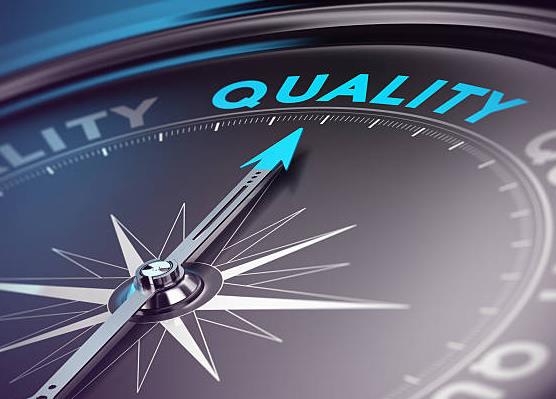Quality engineers must manage the list, what to do a clear!
Adhere to the three principles of non-conformity
1, Do not accept non-conforming products
Do not accept non-conforming products refers to the staff in the production and processing before the first pass the product according to the provisions to check whether it is qualified, once the problem is found then have the right to refuse to accept, and timely feedback to the previous process. The former process personnel need to immediately stop processing, trace the cause, take measures so that quality problems can be found in time to correct, and to avoid waste caused by the continued processing of substandard products.
2, Do not make substandard products
Do not make substandard products refers to accept the qualified products of the previous channel, the strict implementation of operational specifications in the processing of this post to ensure the processing quality of the product. The inspection, confirmation and other preparatory work before the operation is done fully in place; the process condition in the operation is always paid attention to avoid or early detection of abnormalities, to reduce the probability of producing non-conforming products. Adequate preparation and confirmation in the process is the key to not creating non-conforming products. Only by not producing defective products can make it possible not to flow out and not to accept defective products.
3、Not to flow out of non-conforming products
Not to flow out of non-conforming products means that employees complete this process processing, need to check to confirm product quality, once the discovery of defective products, must promptly stop, the defective products in this process cut off, and in this process to complete the disposal of defective products and take preventive measures. This process should ensure the delivery of qualified products, which will be rejected by the next process or the “customer”.

Prevent 4 misconceptions
1、All-purpose theory”
To obtain the quality system certification is to obtain the pass to the international market”, this phrase was widely spread in the 1990s. For a time, it became fashionable for enterprises to import GB/T19001 standard to establish quality system and pass the certification, and advertisements must use the words “won the certificate”. The exaggeration of public opinion made the function of quality system magnified, making it an all-purpose tool, elevating the original work of focusing only on the stability and reliability of product quality to the work of whether the enterprise can participate in international competition, increasing the pressure on the enterprise quality management department. This excessive expectation also for the subsequent generation of quality management system “useless theory” has laid the groundwork.
2、Only certificate theory
With the progress of reform and opening up, the liberation of the mind and the pursuit of wealth makes people more willing to seize the immediate opportunity to obtain immediate gains. In enterprise management, people are more concerned about the immediate results and ignore the basic management work, this impetuous mentality in many enterprises has led to the management style of quick success, reflected in the treatment of quality management system attitude, is the “only certificate theory”.
3, useless theory
I often hear people criticize the quality management system, saying that the system is useless, laborious; others criticize the GB/T19001 standard, saying that the standard does not give specific solutions, is an empty standard. Because there are many critics of the theory and practice of quality management lack of overall understanding, so these statements can be understood, but it is difficult to agree.
4、Outdated theory
After obtaining the quality management system certification, many enterprises do not continue to consolidate the quality management system and implement continuous improvement, but unilaterally seek new and high, and import management concepts and methods such as Six Sigma and Performance Excellence Model in a hurry. It must be emphasized here that the quality management system based on GB/T19001 standard is an inseparable cornerstone in the building of enterprise management, and only when the quality management system is solid, the building will be safe. It is important to know that the cornerstone is never out of date!

Learn the 5 major tools
1、Statistical Process Control
Statistical Process Control (SPC: Statistical Process Control) is a quality management technique that applies statistical techniques to evaluate and monitor each stage of the process, establish and maintain the process at an acceptable and stable level, so as to ensure that products and services meet the specified requirements. It is used to ensure that the process is stable and predictable; to improve product quality, productivity and cost reduction; to provide a basis for process analysis; to distinguish between special and common causes of variation, and to serve as a guide for taking local measures or measures for the system.
2、Measurement system analysis
Measurement System Analysis (MSA: Measure System Analyse) data is obtained by measurement, the definition of measurement is: measurement is assigned to specific things to express their relationship about the particular characteristics. This definition was first given by C. Eisenhart. The process of assignment is defined as the measurement process, and the value assigned is defined as the measurement value. It is used to determine whether the data used is reliable, to evaluate new measurement instruments, to compare two different measurement methods, to evaluate measurement methods that may have problems, and to identify and solve measurement system errors.
3、Failure mode and effect analysis
Failure Mode & Effect Analysis (FMEA: Failure Mode & Effct Analyse) is a formal structured procedure used to analyze current and past process failure mode data in order to prevent these failure modes from occurring again in the future. The purpose of the model is to enable easy and inexpensive modifications to the product or process, thereby mitigating the post-modification crisis; and to find measures that can avoid or reduce the occurrence of these potential failures. The advantages of this model are to point out the design reliability weaknesses and propose countermeasures; to save unnecessary losses by using experimental design or simulation analysis to improve the inappropriate design in real time according to the requirement specifications and environmental conditions; to shorten the development time and development cost by implementing FMEA effectively; at the beginning of FMEA development, design technology was the consideration, but later development, in addition to design time, manufacturing engineering and inspection engineering can also be used. In the beginning, FMEA was developed with design technology in mind, but later it was developed to be used not only for design time, but also for manufacturing engineering and inspection engineering; to improve product quality, reliability and safety.
4、Advanced Product Quality Planning
Advanced Product Quality Planning (APQP: Advanced Product Quality Planning) is part of a quality management system. Product quality planning is defined as a structured approach used to identify and develop the steps required to ensure customer satisfaction for a product. The goal is to facilitate contact with everyone involved to ensure that the required steps are completed on time. Effective product quality planning relies on the commitment of top management to work toward the goal of customer satisfaction Product quality planning is a structured approach.
5、Production Part Approval Process
Production Part Approval Process (PPAP: Production Part Approval Process) specifies the general requirements for the approval of production parts, including production parts and bulk materials.The purpose of PPAP is to determine whether the supplier has correctly understood all the requirements of the customer’s engineering design records and specifications, and whether its production process has the potential capability to production process to meet the customer’s required product at the specified production rate. The objective is to determine whether the supplier has correctly understood all requirements of the customer’s engineering design records and specifications and has the potential to consistently meet these requirements during the actual production process under the conditions of the execution of the required production beat.

Eliminate 6 kinds of waste
1、Waste of waiting
The waste of waiting in quality management is mainly the following: (1) Waiting for instructions from superiors. (2) waiting for the subordinates to report. (3) waiting for the production site contact.
2、The waste of poor coordination
Quality management of mutual cooperation, poor coordination, resulting in work stagnation waste mainly in the following cases: (1) poor coordination of the work process. (2) poor coordination of the implementation of leadership instructions. (3) Poor coordination of information transmission.
3、Waste of disorder
The lack of clear quality regulations, systems, processes, work is prone to confusion, which is well known. But if there are orders, rules and regulations are not followed, according to the will of individuals caused by disorderly waste, it is a very bad thing. (1) The disorder caused by the low quality of quality management personnel. (2) disorder caused by the rules and regulations.
4、Waste of dereliction of duty
The waste of dereliction of duty is the biggest waste in quality management, and one of the manifestations of poor responsibility is coping. The waste of dereliction of duty is mainly caused by mistakes such as poor responsibility, low quality and poor quality of work, but the management assessment and the lack of clarity of responsibilities make it unchecked and unsupervised.
5、Waste of inefficiency
The meaning of inefficiency includes: inefficiency or ineffectiveness of work. Compared with the high efficiency of quality management work, the hidden waste caused by inefficiency is very large; the work that was originally undertaken by just one person needs more than two people to complete; the task that should be completed according to the plan is repeatedly delayed. 6, the waste of quality management costs
Quality management cost is an important part of enterprise quality cost composition. Quality management must act according to “reason”, “reason” in enterprise quality management specifically refers to “objectives, indicators, plans”, through the establishment of plans, implementation plans, assessment plans, improvement Plan, you can most intuitively involved in the concept of cost and waste phenomenon. (1) No basis for plan preparation. (2) The plan is not checked carefully. (3) The plan is not well-disposed.